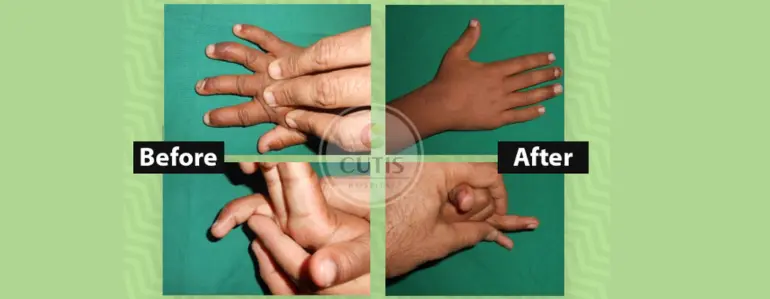Humans are endowed with a remarkable mechanism that allows us to bend and straighten our fingers seamlessly. These miraculous finger movements are made possible by tendons. Tendons are thin, string-like structures that connect muscles to bones and joints, enabling efficient power transfer that results in desired movements. There are two main types of tendons: 1) flexor tendons, which bend the finger joints, and 2) extensor tendons, which straighten the finger joints. To aid in diagnosis and management, these tendons are subdivided into multiple zones. Here, we discuss a case involving a 5-year-old child with an extensor tendon injury and its successful treatment outcome.
Case Background: Krish's Story
We will refer to the child as Krish. Like many kids his age, Krish is hyperactive and curious, always eager to touch and explore anything new. One day, he accidentally injured the back of his fourth (ring) finger on his right hand with a knife, causing a deep cut. Living in a remote village with no immediate access to medical facilities, his mother quickly applied a tight bandage to his injured finger. Fortunately, the deep wound healed over the next couple of weeks. However, after the wound had healed, Krish's mother noticed that he was unable to lift the terminal joint of his injured ring finger.
When Krish was brought to Cutis Hospital, he was diagnosed with a zone 1 extensor tendon injury in his right ring finger. Zone 1 injuries are among the most challenging to repair, even when treated within 6-12 hours of injury. Krish, however, was brought to us on the 22nd day post-injury. This presented numerous challenges: an untreated 22-day-old injury, a difficult zone 1 extensor tendon injury, and a young, hyperactive, and uncooperative patient. Despite these odds, we decided to give it our best effort and attempt the repair.
The Surgical Approach
The scar from Krish's injury was carefully reopened under anesthesia, using magnification. A minimal and gentle dissection was performed, and the damaged tendon ends were delicately repaired with fine suture material. At the end of the operation, a plaster of Paris splint was applied to immobilize and protect the operated finger and hand.
One of the significant postoperative challenges was keeping the splint in place for the mandatory 6-week period required after an extensor tendon repair. Krish, being a typical 5-year-old, managed to break the splint twice, and we had to reapply it both times. However, with perseverance, we managed to keep it on for the full duration.
Recovery and Outcome
After 6 weeks, the splint was removed, and Krish was asked to gently move his finger. To our delight, he did so without hesitation or fear of breaking the repair. Over the next 10 days, Krish's finger regained nearly normal movements and functionality.
Achieving such an exceptional result in these circumstances was a combination of multiple factors: Krish's young age, the initial sharp nature of the injury, the precise execution of the surgery, and a bit of good luck.
Conclusion
This case highlights the complexity and importance of timely and skilled intervention in tendon injuries, even when circumstances are less than ideal. Krish's story serves as a testament to the effectiveness of expert surgical care, the resilience of young patients, and the potential for full recovery with the right approach. For parents and caregivers, it also underscores the importance of seeking specialized care as soon as possible, even if an injury seems to have healed on the surface. We are thrilled with Krish's recovery, which demonstrates how a combination of skill, patience, and perseverance can overcome even the most challenging cases.

 4 November 2018
4 November 2018 HAND SURGERY
HAND SURGERY 0 Comments
0 Comments
